The northern pike is one of the world’s most common and popular freshwater predators. It can be found all over the northern hemisphere and is fished for by millions of anglers. Big pike over 30lb are the stuff that dreams are made of when it comes to sportfishing, as such fish are incredibly beautiful and majestic creatures.
The northern pike (Esox lucius) is a predatory freshwater fish that has an aerodynamic, torpedo-shaped body. The pike inhabits both lakes and river systems in Europe, North America, and parts of Asia. It can reach a maximum length of 60 inches and a maximum weight of about 60lb.
This article will give you all the facts about the apex predator that is the pike and provide you with great images of this amazing fish.
PRO TIP: Need to gear up for your next pike adventure? Then check out this quality equipment on Amazon.
It’s very cost-effective, durable, and will land you plenty of trophy pike!
What Do Northern Pike Look Like?
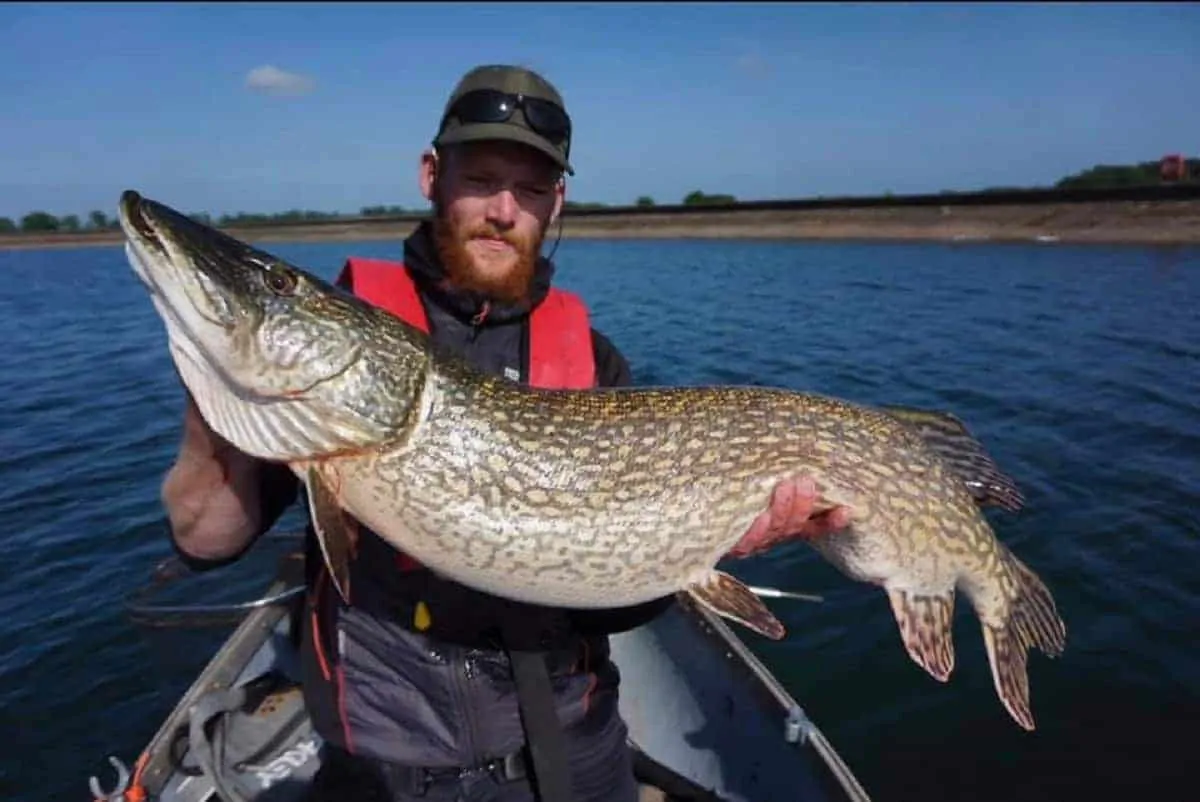
Body Shape
The northern pike has a highly aerodynamic, torpedo-like body shape that it develops at a very early stage in its life. This slender body shape makes the pike a very fast and effective predator.
This shape, coupled with the shape of its head, a rather broad back, and rather dark body coloration, makes that the pike bears a certain, if faint, resemblance to an alligator, which perhaps partly explains its prehistoric and somewhat frightening image as an apex predator.
Coloration
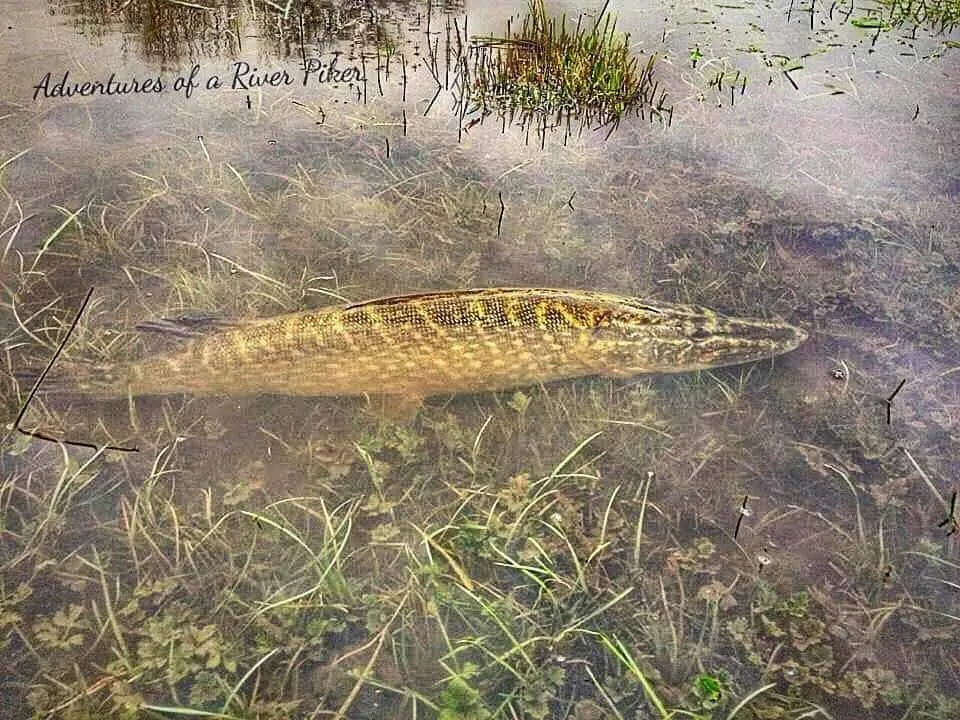
Most commonly, the northern pike has an olive green to dark-green colored body that is dotted with yellow or white bean-shaped spots or short bars on its flanks.
Similar to these spots or bars, its belly is of a white or yellowish color.
Fins
The pike’s fins are often of a deep red or brown color and are marked by either light or dark picturesque spots or lines that sometimes look like someone has drawn them there.
Teeth & Mouth
If the northern pike is known for anything, it’s for its plentiful razor-sharp teeth. A pike’s mouth has up to 700 teeth of varying patterns and sizes. Some bigger specimens can have fang-like teeth that are close to 1 inch in length.
Its mouth, which, rather surprisingly, both resembles that of an alligator and that of a duck, is rather large and can be opened extremely wide, enabling the pike to grab and swallow both large and deep-bodied prey fish.
Eyes
As the pike is mostly a sight hunter, it consequently has rather large eyes. So large, in fact, that they can often look disproportionately large to their body size.
These big eyes give the pike a very large field of vision, which it naturally uses to its advantage when hunting for prey. Of course, water clarity plays an important role here.
More often than not, you will find larger pike populations in clearer water, as it makes it easier for the pike to find food in such conditions.
When having caught a pike, look deeply into its eyes! Sometimes, you can catch a glimpse of its ancient predatory history, as this fish has roamed the waters of the earth for many millennia!
Average And Maximum Length And Weight of Pike
Depending on where in the world you are catching them, the average and maximum size of the pike in your local waters can differ slightly. In North America, it is somewhat lower than in Europe and parts of Asia.
Here is a general data collection of the pike’s average and maximum length and weight:
| Average Length | 20 – 30inches (50 – 75cm) |
| Maximum Length | 55 – 60inches (140 – 150cm) |
| Average Weight | 5 -12lb (2 – 5kg) |
| Maximum Weight | 60 – 65lb (27 – 30kg) |
Of course, it is probably a certainty that somewhere out there in the world, there are larger and heavier pikes swimming around that have not been caught or recorded yet!
Where Are Northern Pike Found?
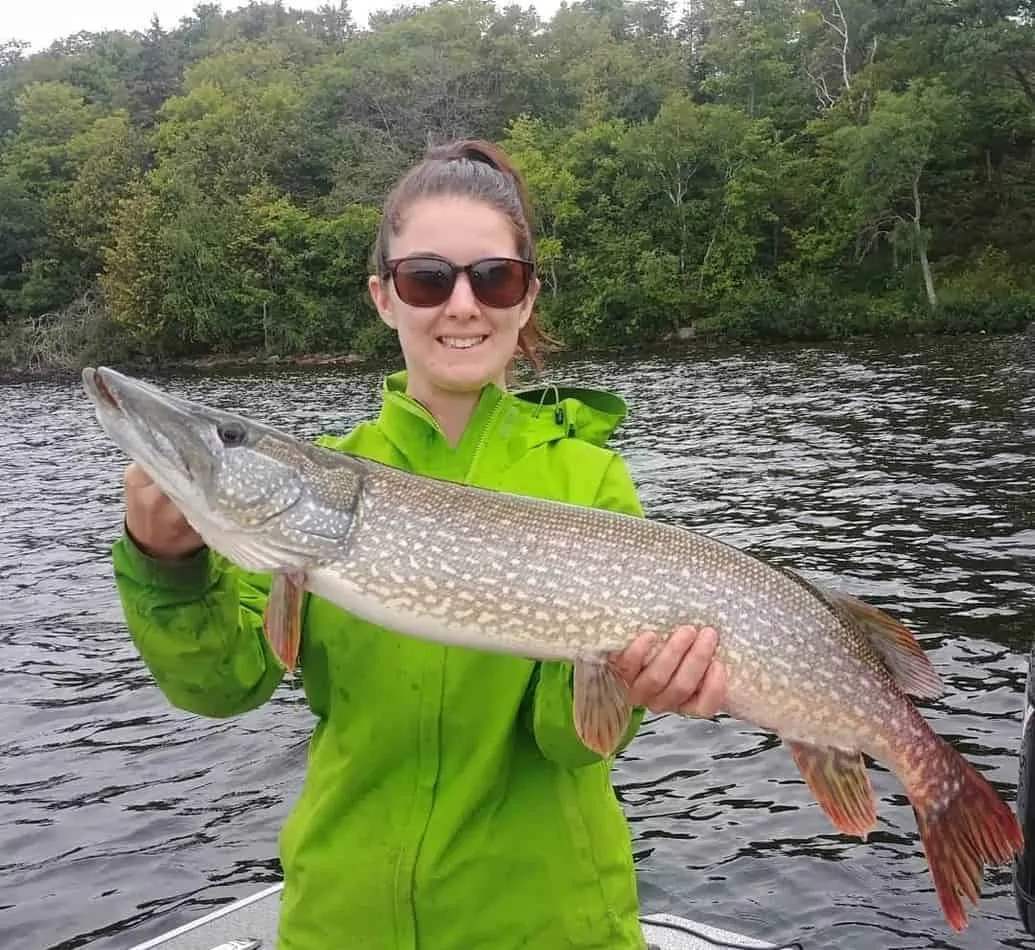
The northern pike is a fish species that can be found all over the northern hemisphere, making it the only species of the Esox genus with a circumpolar distribution, meaning that it has spread around or near the earth’s entire north pole region. As such, it can be found in all of the northern hemisphere’s continents.
Europe
The pike is Europe’s most common and popular predator game fish. There are literally millions and millions of pike anglers who fanatically fish for pike all year round, using all types of different fishing techniques and methods.
It can be found in virtually every European country and all over the British Isles. You can catch pike from the northern parts of Scandinavia to the most southern parts of Italy, Spain, and Greece.
It is also an extremely common fish in the eastern European states and in the whole of Russia, including Siberia in the very northeast of the country.
Some of the biggest European pike can be found in the Netherlands, England, and Germany.
North America
The northern pike is a very common and popular fish in the US and Canada. It can be found in 32 US states.
American pike can be caught in parts of Alaska and Maine in the northern parts of the country, in the Great Lakes regions and the states surrounding them, as well as in the southern parts of the States, such as the northern parts of Texas and Arizona.
It is also a common fish in many Canadian provinces, except for British Columbia and the maritime areas of eastern Canada, where it is rare.
Asia
As the pike can be found all over the northern hemisphere, it naturally also made its way into parts of the Asian continent.
Here, it can most commonly be found in The western countries of the Asian continent, such as Georgia and Kazakhstan, as well as the western parts of Mongolia and China.
Are There Other Types of Pike?
Southern Pike
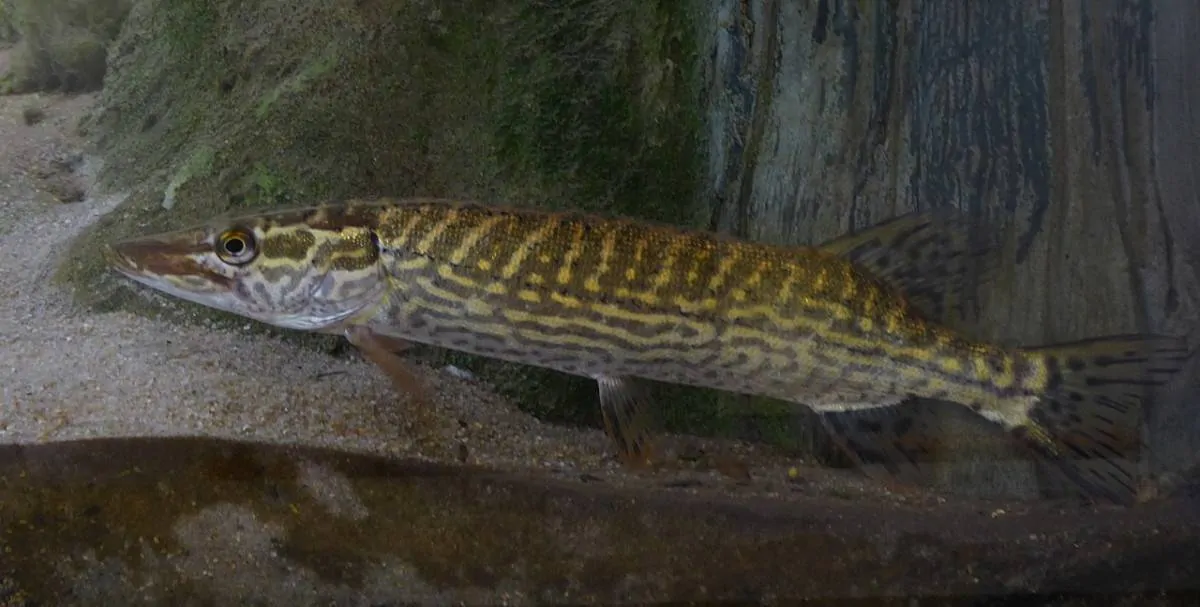
The southern pike (Esox cisalpinus) is a differently colored variant of the common northern pike, which was only recently classified as a separate species (in 2011).
This type of pike exhibits various patterns of bars or lines all over its body, as opposed to the northern pike’s spots. The southern pike also has fewer scales along its lateral line (101-115) than does the northern pike (125-148).
The southern pike is native to the northern parts of Italy, as well as southeastern France and Switzerland.
As it appears to be very closely related to its northern counterpart, the southern pike can reach roughly the same length and weight as the northern pike.
Chain Pickerel
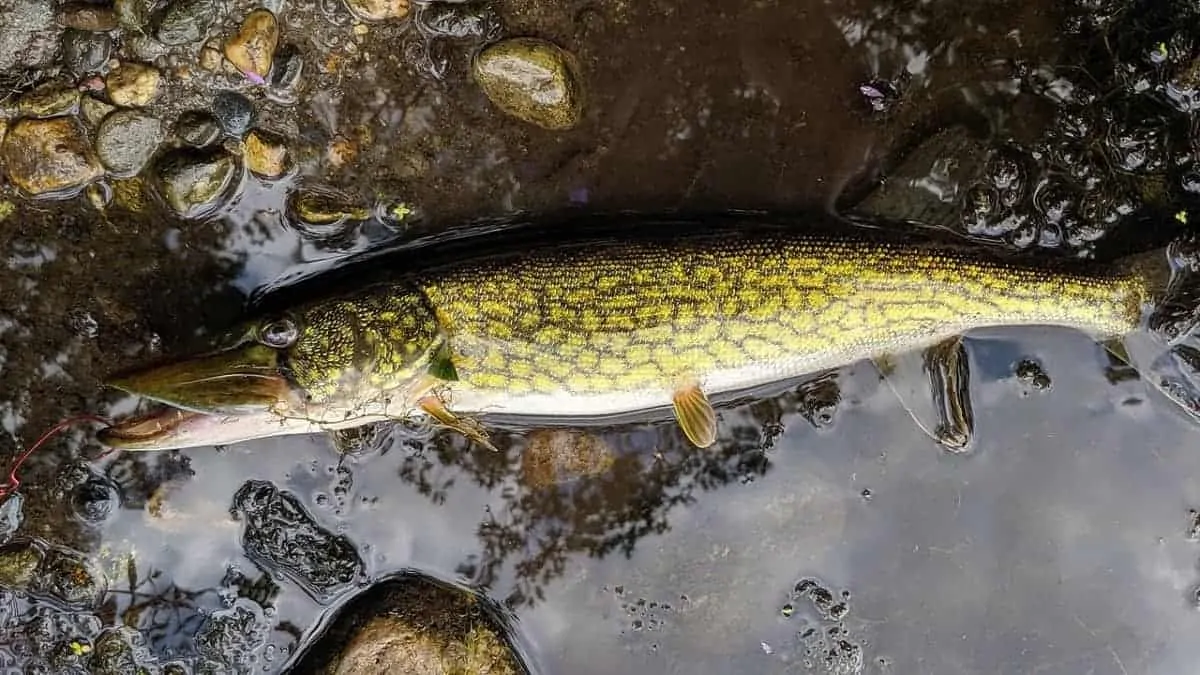
The chain pickerel (Esox niger) is native to North America and closely related to the other two pickerels (Esox americanus), which are the redfin pickerel and the grass pickerel.
This type of pike only has a slightly different pattern from that of the northern pike and is the type of pickerel that most often gets confused with the common pike.
These two species do not differ all that much in body coloration, but the chain pickerel’s spots, unlike the northern pike’s, run into each other, forming the pattern of a chain.
This is the main feature to look for in a chain pickerel.
Another one is size, as northern pike grow to be much larger than chain pickerel, which can only reach an approximate weight of 8-9lb.
This type of pike can be caught along the entire North American east coast, from southern Canada in the north all the way down to Florida and westwards to the state of Texas.
It is also native to Lake Michigan and the lower parts of the Great Lakes.
RELATED ARTICLE: This articles explains the difference between pike and pickerel. Make sure to check it out as well!
Amur Pike
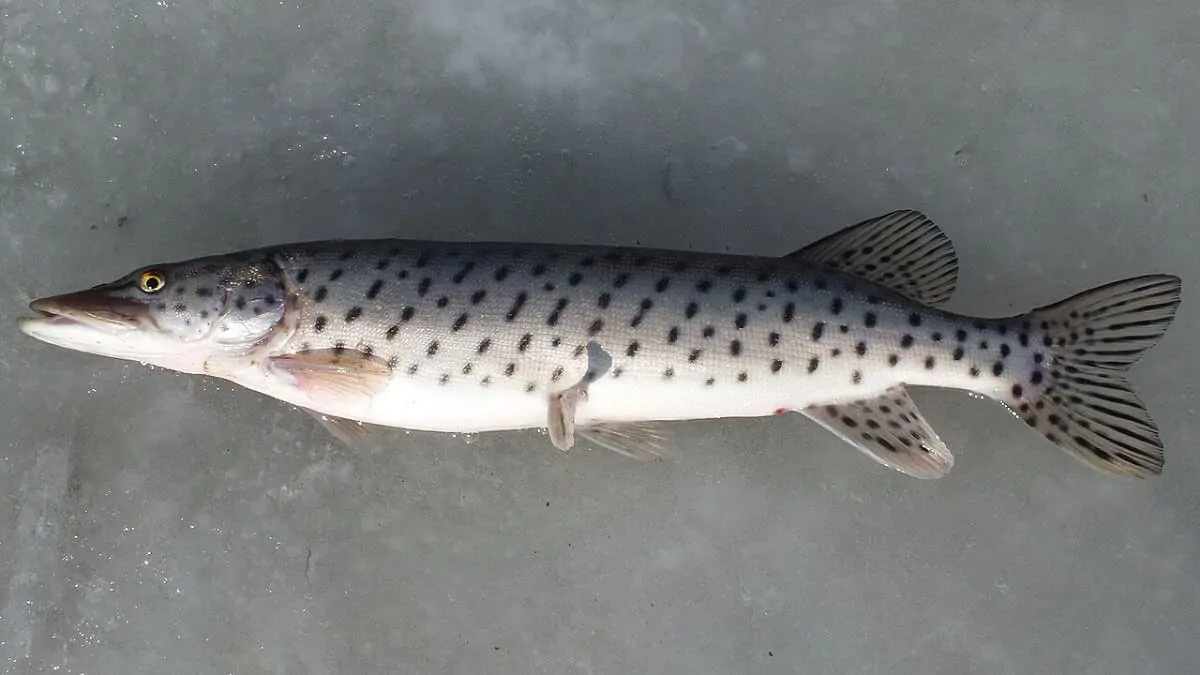
The amur pike (Esox reichertii) is a rather exotic-looking member of the Esox family, which is native to the Amur River system in east Asia.
It also goes under the name black-spotted pike, which can be explained by its rather unusual pattern of black spots all over its silvery body.
These spots make it clearly distinguishable from the northern pike, apart from the fact that the common pike is not found in this area of the world.
The amur pike can reach a maximum weight of 30lb, making it somewhat smaller than the common pike.
Back in 1968, it was actually introduced to Glendale Lake in Pennsylvania (USA), where it quickly started to adapt to its new environment.
Unfortunately, though, the entire stock was lost in the summer of 1976, and since that year, there have been no further attempts to introduce this pike species to North American waters.
What Are Origins of Northern Pike?
It remains somewhat unclear when and where the northern pike first started to appear.
Research suggests that it is likely that the genus Esox originated on the North American continent sometime during the last interglacial period (around 2.2 million years ago) and not on the Eurasian continent, as previously suggested by scientists.
From there, it then made its way through Alaska, over the Bering land bridge, and into the territory known as today’s Russia.
From Russia, it then spread to and populated the lakes and rivers of pretty much the entire Eurasian and European continent.
When Do Pike Spawn?
The spawning period of the northern pike stretches from March to early May, depending on local air and water temperatures, which will have to reach at least 9 degrees C (48 degrees F).
If the water temperature suddenly drops below 6 degrees C (43 degrees F), the laid eggs will not hatch, giving the pike’s offspring a much-increased rate of survival.
This evolutionary feature, coupled with the enormous amount of eggs that a female pike can lay, has resulted in strong and resistant pike populations in water systems all over the world, despite the fact that many of the young die at a rather young age.
Male pike arrive at the breeding grounds weeks before the females do and tend to stay for days, or even weeks, after the spawning session is completed, which further aids the pike’s survival chances.
RELATED ARTICLE: Head over to this in-depth article for even more facts about the pike spawn!
What Do Northern Pike Eat?
Being a carnivorous fish, the pike primarily eats all sorts of prey fish. These can include the following:
In Europe
- roach
- rudd
- perch
- smaller bream
- smaller tench
- smaller pike
In North America
- minnow
- chad
- suckers
- flatheads
- ciscos
- creek chub
- shiners
- smaller bass
- smaller walleye
- smaller pike
Northern pike can be cannibalistic, which is why I included smaller pike in the list.
This is actually a rather common phenomenon in many waters and explains the enormous amounts of eggs that pike are laying.
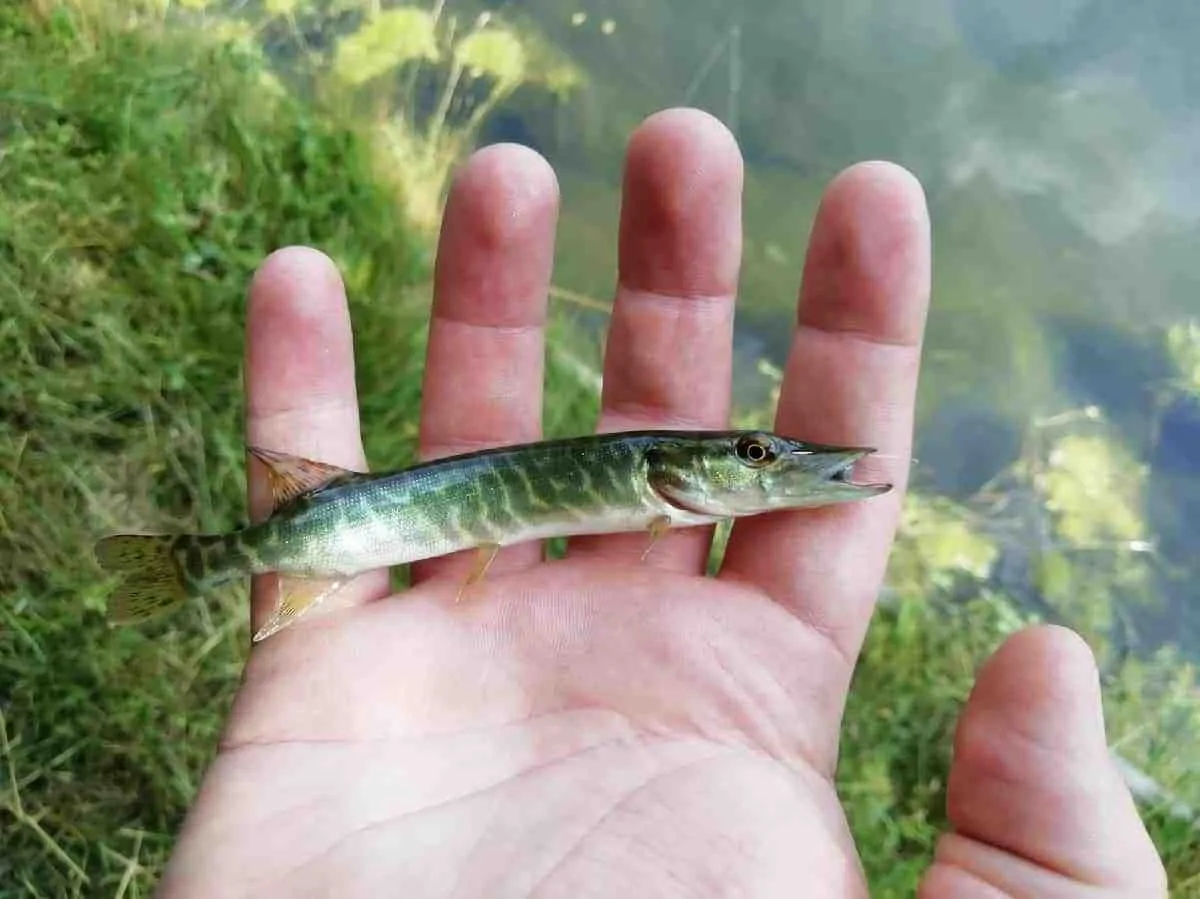
Especially given the fact that there even is some sibling cannibalism amongst juvenile pike.
When they are not feasting on each other, or when natural prey fish are scarce, they can also turn to other sources of food. Such can include the following:
- smaller waterfowl
- water rats
- worms
- insects
- leeches
- crayfish
- frogs
RELATED ARTICLE: Check out this article if you want to find out even more about the pike’s favorite foods!
How to Fish for Northern Pike?
The northern pike is one of the world’s most popular game fish, and millions of anglers worldwide are targeting this freshwater predator each and every year. Hence, there are plenty of fishing methods to apply in order to catch pike.
No matter which style you go for, however, always make sure to put on a wire- or very strong fluorocarbon leader, as pike can easily bite through any conventional mainline.
Spin Fishing
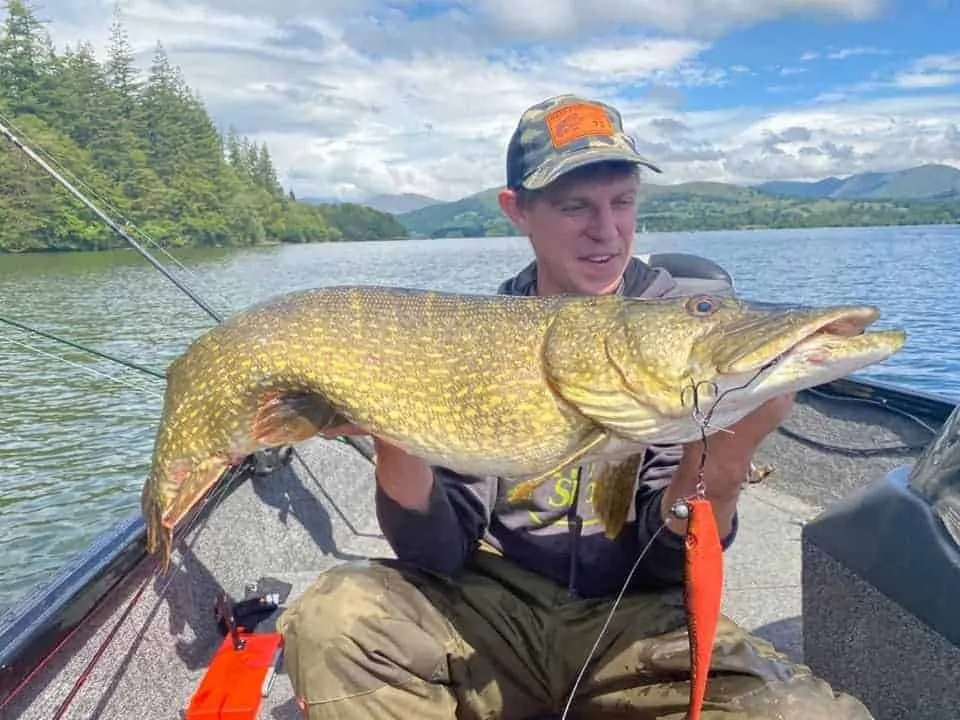
Spin fishing is probably the most popular fishing method when it comes to catching pike. In recent years, the pike bait and lure market has virtually exploded, and there are now various types of pike lures available for purchase.
You can spin fish for pike using:
- soft bait lures
- hard bait lures
- crankbaits
- jerkbaits
- spinnerbaits
- spoons
- jigs
Float Fishing
This is a more passive and subtle way to fish for pike. Generally, float or bobber fishing for pike will require a rather heavy float or bobber (15-40g), in order to present your dead or live bait at the right depth.
Trust me, there is no greater feeling than seeing that big float pop under like it was a table tennis ball and disappearing into the depth, as a big pike has taken your bait and swims off with it. What a thrill!
Fishing on The Bottom
This is a great method for winter pike when the fish are at a greater depth and less active than during the rest of the year.
Ledgering for pike means fishing on the bottom using a weight to keep your dead or live bait on or just above the lake or river bottom.
As you don’t have a visual indication, such as a float, when you get a take, you will need to have some form of bite indicator.
This can be either a hanger or bobbin or a bite alarm, which you will have in combination with a rod pod or bank sticks.
Trolling
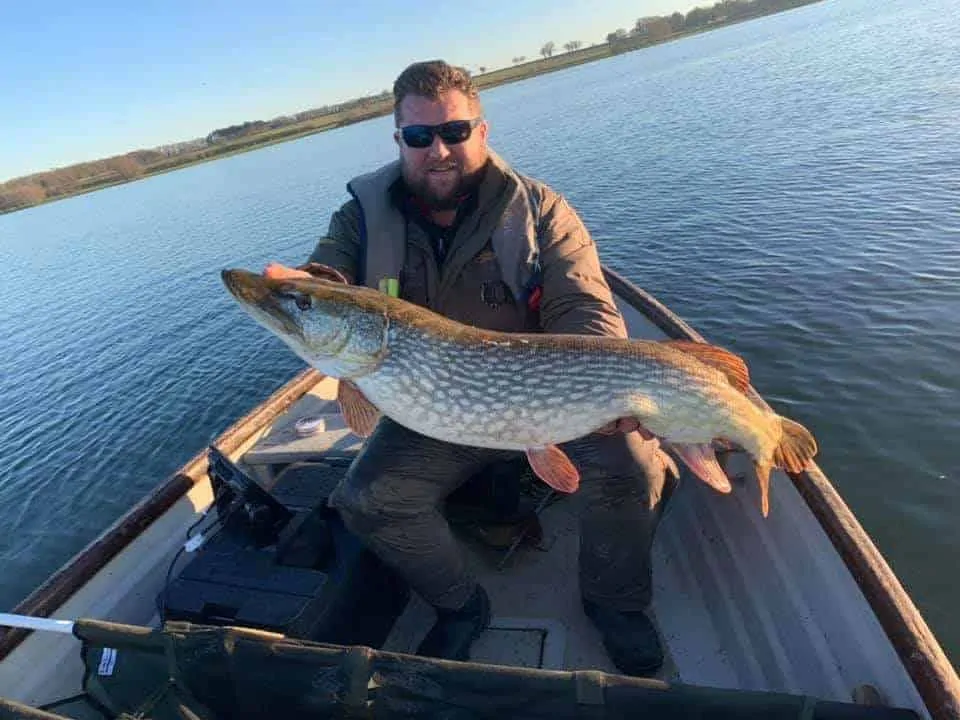
This is another very commonly practiced way to fish for pike with lures or live bait. The only difference is that you will be needing a boat.
Trolling means that you have your lines drawn through the water behind a moving boat. You can easily use a boat engine, rows (for slow trolling), or drift with the help of the wind.
As you don’t have to cast out and reel in your line, you can fish with several rods in the water, thereby increasing your chances of catching fish.
Ice Fishing
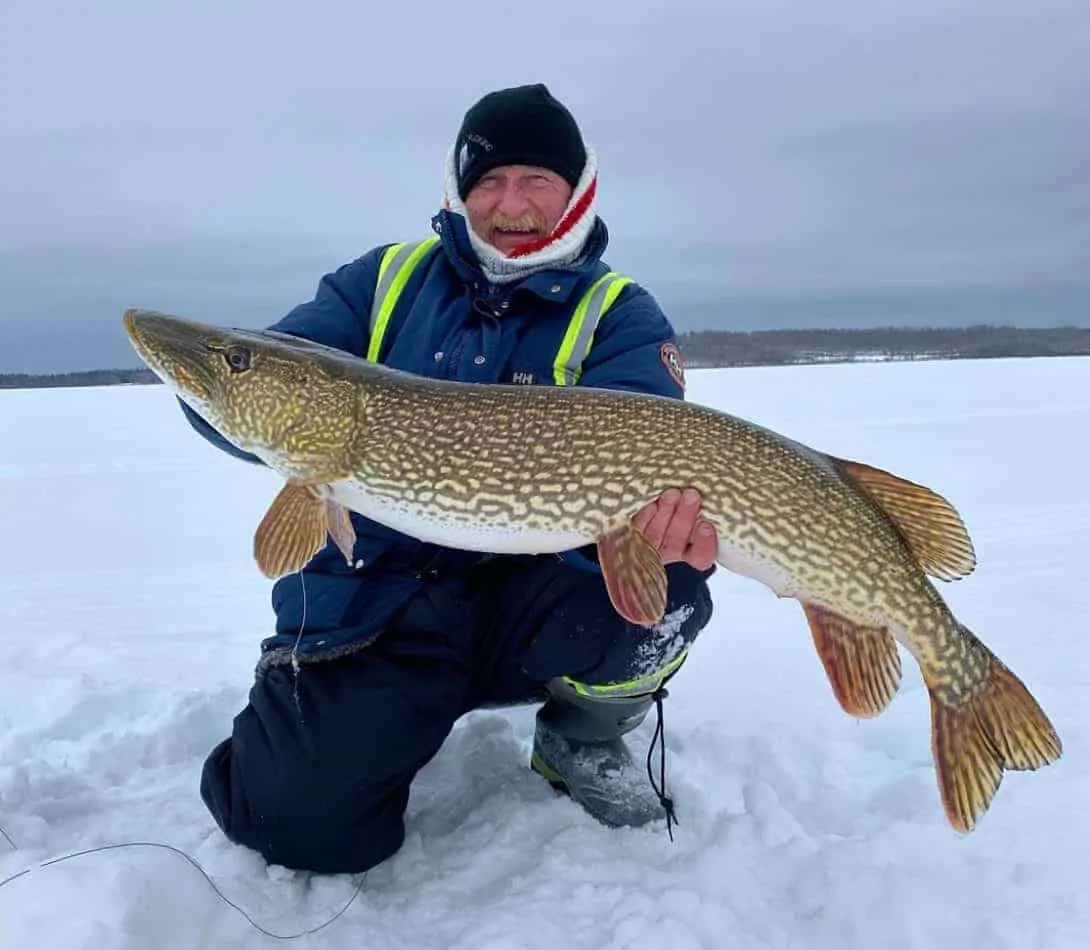
In parts of the northern hemisphere, ice fishing is a commonly practiced method to fish for pike during winter, and a very fun one at that.
You can ice fish more actively with one rod and a lure or more passively with a couple of rods (or tip-ups) and live bait.
The latter gives you the advantage of covering a greater area on the ice, which improves your chances of actually finding the pike and getting bites.
Insider tip: Always make sure to a) have at least one fishing buddy with you, b) make sure the ice is thick enough to carry you, c) wear ice picks and d) drill a big enough hole (big winter pike are fat)!
What Is the Biggest Northern Pike Ever Caught?
The official All-Tackle world record northern pike was caught in Germany a long time ago. It was a massive fish of 55lb 1oz that was caught in Lake Grefeern on October 16th, 1986.
According to local sources, the fisherman who caught this monster, German angler Lothar Louis, initially head out to fish for carp and roach. During his session, he saw a massive pike in his swim and decided to go for it instead.
Good thing he did, wasn’t it? Imagine what one little decision in one’s life can lead to! In Lothar’s case, it was a world record pike that has dominated the record list for now almost 35 years.
Surely though, there must be bigger pike out there!
RELATED ARTICLE: Read this in-depth article on how big northern pike really get and what their avrage size is in defferent parts of the world!
Why Is It Called a Northern Pike?
Let’s take a closer look at the pike’s name and dissect it:
“Northern”
The word northern in northern pike clearly has a geographical meaning, as the northern pike is primarily found in the northern hemisphere (even the southern pike is geographically belonging to the north).
Research states that the pike’s distribution is limited to the northern hemisphere due to the fact that
“Pike”
The word pike is a Middle English term, which was a pole weapon and literally means “pointed”. Middle English was spoken between the years 1055 and 1500.
As the northern pike must have had a clear resemblance to this ancient weapon, people who were catching and eating it started to name the species pike.
Other Names for Northern Pike
Depending on where in the world you live, the pike can have plenty of different names. Here are a few examples from around the globe:
United Kingdom
The northern pike is a very popular game fish in the United Kingdom. Here, it is commonly called a “pike” or “jack”.
In the olden days, the pike was often referred to as “luce” (fully grown pike) or “Luci” (young pike) when being used in Middle Age heraldry. This nickname would eventually be used to form its Latin name Esox lucius.
Germany
In Germany, common names for pike can include “freshwater crocodile”, “Esox”, or “water wolf”. In German, the pike is called “Hecht”.
Sweden
In Sweden, the northern pike is sometimes referred to as a “slime cucumber”. The Swedish word for pike is “gädda”.
Russia
As the pike is one of the most popular fish species in Russia and goes under the name “Shchuka” in this country.
USA & Canada
Here, the pike probably has its widest variety of different names. Depending on the region, it can be called:
- common pike
- lakes pike
- great northern pike
- northern
- snake
- slough shark
- snot rocket
- slimer
- gator
- jack
- jackfish
Why Are Northern Pike Called Jackfish?
In both the U.S., Canada, and the U.K., the northern pike is sometimes referred to as jack or jackfish. This nickname actually has quite an interesting story to it.
Legend has it that the British explorer Alexander MacKenzie while exploring the newly discovered American west, hired a cook to accompany him on his travels.
That cook was named Jack. Jack was a passionate fisherman who liked to fish for pike, which, during those times, was more than abundant in the lakes and rivers of North America.
As he was catching plenty of pike all the time, he naturally served it frequently at supper time. So much so that MacKenzie and his men started to call the served pike for Jack’s fish, or simply jackfish.
Unfortunately, it is not mentioned if they also got fed up with eating pike all the time, so one can only speculate.
Essential Gear Tips
If you’re looking for solid and reliable pike fishing equipment, these tips might be useful for you.
The following tackle is of top quality and sells at a very reasonable price on Amazon:
Rod: 7′ MH St. Croix Premier Casting Rod
A versatile and beautifully made medium-heavy 7′ baitcasting rod that’s perfect for bigger predators. Casts anything up to 2.5 ounces extremely well. Has an awesome balance, action, and sensitivity.
Reel: Abu Garcia Revo Beast 41 Baitcasting Reel
An affordable, high-performance baitcasting reel with amazing strength. Casts super smoothly and will last you forever! Makes for a great pike combo together with the Ugly Stick!
Mainline: Power Pro Spectra
One of the best braids available today. Zero stretch, great feel, and immense strength make this line the perfect pick for pike in both open and snaggy waters. Put on a 30lb test and you’re good to go.
Related Pike Articles
Here are some related articles on pike and pike fishing that you may find helpful.
- Northern Pike Teeth Facts (With Pictures)
- Pike vs Musky (How to Tell Them Apart)
- How to Fish for Saltwater Pike (A Complete Guide)
- Best Way to ice Fish for Northern Pike
Feature image courtesy of Raymond Young

